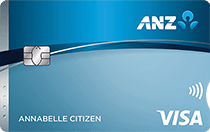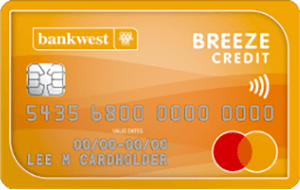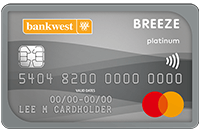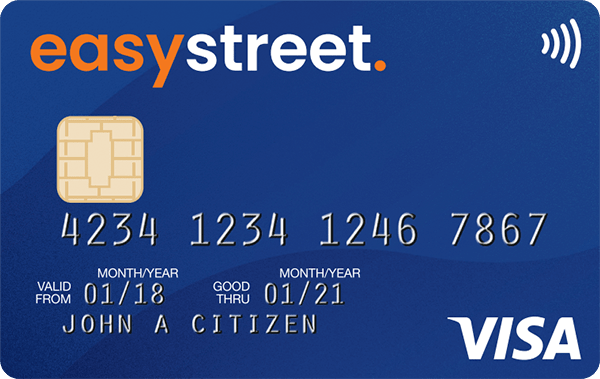How do credit card balance transfers work?
Savrr.com is a trading name of SAVRR Australia Pty Ltd. Comparison tables are powered by SAVRR Australia Pty Ltd who do not compare every provider in the market, or all products from the displayed providers. SAVRR Australia Pty Ltd does not give recommendations, advice or credit assistance and may receive a fee if you, apply, click through, or successfully qualify, for a product displayed.
Learn More
If you’re carrying multiple credit card debts, consolidating them into one single debt with a balance transfer could help to simplify the payments and alleviate some of the discomfort. But, before applying for a balance transfer, be sure to do your research to see whether this option could be helpful for you.
What is a credit card balance transfer?
A credit card balance transfer is when you move the balance of one or more credit cards (that is, the amount you owe) to a different credit card. Depending on your circumstances, it may help you to streamline your debts, reduce the amount you’re paying in annual fees, temporarily reduce the interest costs, and leave you with just one statement to pay each month.
However, before deciding to apply for a credit card balance transfer it’s important to weigh up a range of options. If you’re struggling with debt, it could help to reach out for support and advice. You may want to speak with your lender about their support options, or contact a support service like the National Debt Helpline, who can provide advice on how to effectively manage your debt.
How do I transfer balance to and from my credit card?
Most balance transfer credit cards allow you to shift debt across from your existing credit cards. The process of doing so is usually simple. First, you apply for a balance transfer credit card, including all the details about the existing credit card accounts you have and how much of their balance you want to have transferred across. Once the application is approved, the new credit card provider will move the balance across to the new account for you.
If your balance transfer card offers an interest-free or low-interest introductory period, you can make the most of it by paying off your balance as soon as possible to avoid any added costs. Once the introductory period is up, any debt that remains on your account will attract a higher interest rate.
How do I check my credit card balance?
Checking your credit card balance is easy. Most banks and lending institutions have mobile apps that allow you to keep track of all your spending on your credit card, as well as the total balance. You can also log in to your account online through their website, call your provider, or check your paper statement (if you receive them).
It is important to keep track of your balance so you can avoid any overspending and lower the risk of going over your credit limit. Regularly logging in to check your account can also help you better understand the monthly fees and interest that are being applied to your account.

How do I check my credit card due date?
Your credit card due date will be stated on every credit card statement that comes through. The statements also include information about minimum payment amounts and how to pay your monthly instalment. If you would like to check your credit card due date before your new statement is issued, simply log in to your provider’s mobile app or online portal. If you don’t have access to the internet, simply call the customer service department, and they should be able to assist.
How long is the interest-free period on my credit card?
An interest-free period is the maximum amount of time between when you make a purchase and when interest will be charged on that purchase.
Many credit card companies will offer an interest-free period on purchases for a certain number of days after your credit has been issued. However, if there is an outstanding balance left on the card each month, the interest free period will be void with many lender until the full balance is again paid off.
Just how long this period is and when it is applied will depend on which bank or financial institution you have taken your card out with, and the terms and conditions on that specific card.
Are there any additional fees for transferring cash from my credit card?
Transferring cash from your credit card is generally considered a cash advance. It sits in the same category as getting cash out at an ATM.
Not all credit cards will allow you to transfer cash, but those that do will usually charge a cash advance fee for doing so. Generally, any cash advance activity will attract a higher interest rate (higher than the interest rate on purchases). It is also likely to negate any interest-free days you might have on your account.
The exact costs of transferring cash from your credit card will depend on the cash advance interest rates and fees that your particular credit card has in place.
Are there balance transfer fees?
In short, yes, there usually are.
Balance transfer fees imposed by lenders are usually attributed to covering administrative costs associated with transferring your existing debt over from another lender or institution. The amount you’re charged for transferring your debt across will depend on your lender. Some lenders will charge a percentage of the amount you transfer over (sometimes between 2 and 5 per cent), while others charge a flat fee. This amount will be added to the balance of your new card.
You may be able to avoid these charges if you can find a card that doesn’t have any balance transfer fees, whether it be for a promotional period or as an ongoing offer. It’s not impossible, but these can sometimes be harder to find. The next best option could be to look for a suitable card with a lower transfer fee.

ANZ - Low Rate Credit Card
Balance Transfer offer
Balance Transfer
3% BT fee applies.
Balance Transfer Fee

Bankwest - Breeze Classic Mastercard
Balance Transfer
3% BT fee applies.
Balance Transfer Fee

Bankwest - Breeze Platinum Mastercard
Balance Transfer
3% BT fee applies.
Balance Transfer Fee

EasyStreet - Low Rate Credit Card
Balance Transfer
Should I do a credit card balance transfer?
The answer to this question will depend on your own unique circumstances and the products available. Before you decide it can help to compare a range of balance transfer credit cards.
Before opting for a balance transfer, it could help to crunch some numbers to work out if this option really is best for you. Does the saving in interest work out to be more than the balance transfer fee you will be charged? Do the potential savings outweigh any additional balance transfer fees? For example, if you’re transferring a large amount across and the transfer fee is a percentage of the balance transferred, your savings will be reduced.
However in many cases, if you’re able to find a suitable balance transfer option combining all your credit card debts, you may find a benefit in using this option to help pay down your debt. Just make sure you thoroughly review all of the fees and costs against your current situation, and get a good understanding of the terms and conditions before applying.